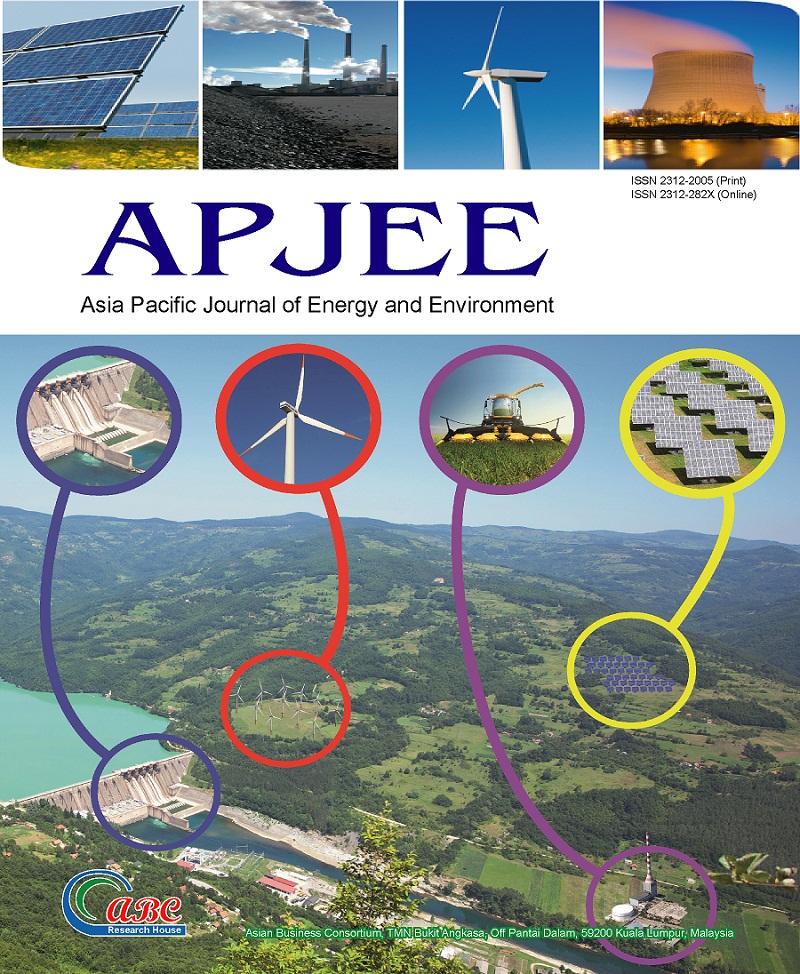Heat Waves in Bangladesh: Understanding the Threats and Finding Solutions
DOI:
https://doi.org/10.18034/apjee.v9i2.765Keywords:
Heat Wave, Temperature, Climate Change, BangladeshAbstract
Bangladesh has seen a significant rise in the number and strength of heat waves in recent years. These heat waves are hazardous for health, farming, and the economy. This paper investigates why these heat waves are happening, how they affect different areas, and what can be done to lessen their harmful effects. By carefully studying weather data, climate models, and economic and social factors, this study aims to give valuable ideas on how to adapt and reduce the impact of heat waves. The results show that it’s essential to work together to deal with heat waves' many effects and help communities become stronger. With the right actions and policies, we can lower the risks of extreme heat, protect people’s health, and ensure the economy and environment stay strong.
Downloads
References
Della-Marta, P. M, Luterbacher, J., von Weissenfluh, H., Xoplaki, E., Brunet, M., Wanner, H. (2007). Summer heat waves over Western Europe 1880-2003, their relationship to large-scale forcings and predictability. Climate Dynamics, 29(2), 251–275. https://doi.org/10.1007/s00382-007-0233-1 DOI: https://doi.org/10.1007/s00382-007-0233-1
Ganguly, A. R., Steinhaeuser, K., Erickson, D. J., Branstetter, M., Parish, E. S., Singh, N., Drake, J. B., Buja, L. (2009). Higher trends but larger uncertainty and geographic variability in 21st century temperature and heat waves. Environmental Sciences, 106(37), 15555-15559. https://doi.org/10.1073/pnas.0904495106 DOI: https://doi.org/10.1073/pnas.0904495106
Hossain, M. S. (2020). A Parametric Study Of Window, Orientation And Shading to Minimize Energy Consuption in Mechanically Ventilated High Rise Office Buildings in Dhaka, Bangladesh. Asia Pacific Journal of Energy and Environment, 7(1), 27-38. https://doi.org/10.18034/apjee.v7i1.271 DOI: https://doi.org/10.18034/apjee.v7i1.271
Hossain, N. ., & Jalil, R. (2018). Analyses of Bio-Energy Properties from Malaysian Local Plants: Sentang and Sesendok. Asia Pacific Journal of Energy and Environment, 5(1), 7-10. https://doi.org/10.18034/apjee.v5i1.245 DOI: https://doi.org/10.18034/apjee.v5i1.245
Lee, H. J., Lee, W. S., Yoo, J. H. (2016), Assessment of medium-range ensemble forecasts of heat waves. Atmos. Sci. Lett., 17, 19-25. https://doi.org/10.1002/asl.593 DOI: https://doi.org/10.1002/asl.593
Lotake, S. N. ., & Wagh, M. M. (2020). Performance Evaluation of Multiple Helical Tubes as a Receiver for Solar Parabolic Trough Collector. Asia Pacific Journal of Energy and Environment, 7(1), 39-46. https://doi.org/10.18034/apjee.v7i1.272 DOI: https://doi.org/10.18034/apjee.v7i1.272
Mishra, V., Ganguly, A. R., Nijssen, B., Lettenmaier, D. P. (2015). Changes in observed climate extremes in global urban areas. Environmental Research Letters, 10(2), 1-10. https://doi.org/10.1088/1748-9326/10/2/024005 DOI: https://doi.org/10.1088/1748-9326/10/2/024005
Perkins, S. E. (2015). A review on the scientific understanding of heatwaves—Their measurement, driving mechanisms, and changes at the global scale. Atmospheric Research, Volumes 164–165, 242-267. https://doi.org/10.1016/j.atmosres.2015.05.014 DOI: https://doi.org/10.1016/j.atmosres.2015.05.014
Srivastava, A.K., Rajeevan, M. and Kshirsagar, S.R. (2009), Development of a high resolution daily gridded temperature data set (1969–2005) for the Indian region. Atmosph. Sci. Lett., 10: 249-254. https://doi.org/10.1002/asl.232 DOI: https://doi.org/10.1002/asl.232
Thompson, C. R., Talla, R. R., Gummadi, J. C. S., Kamisetty, A (2019). Reinforcement Learning Techniques for Autonomous Robotics. Asian Journal of Applied Science and Engineering, 8(1), 85-96. https://ajase.net/article/view/94
Vaidyanathan, A., Kegler, S. R., Saha, S. S., & Mulholland, J. A. (2016). A Statistical Framework to Evaluate Extreme Weather Definitions from a Health Perspective: A Demonstration Based on Extreme Heat Events. Bulletin of the American Meteorological Society, 97(10), 1817-1830. https://doi.org/10.1175/BAMS-D-15-00181.1 DOI: https://doi.org/10.1175/BAMS-D-15-00181.1
Downloads
Published
Issue
Section
License
Copyright (c) 2022 Md. Shelim Miah, Safayet Ullah, Mehedi Hasan Siddique

This work is licensed under a Creative Commons Attribution-NonCommercial 4.0 International License.









